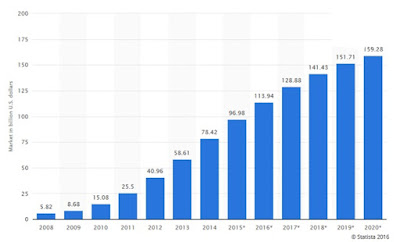Twitter Feed
Second Government Cloud Computing Survey
Earlier this week I had the pleasure of presenting at the Sys-con International Cloud Computing Expo in New York City. My presentation, The View from Government Cloud Computing Customers, reviewed…
An Ontology for Tactical Cloud Computing
This week I’ve had the pleasure of presenting at two fairly unique conferences. On Tuesday I was in San Diego at the Simulation Interoperability Standards Organization (SISO) Workshop. SISO is…
Federal Cloud Computing Roadmap
ServerVault, a long time provider of IT hosting services to the Federal government, has been discussing cloud computing quite a bit with their current (and future) customers. The repetitive nature…
Booz Allen Hamilton Lays Out Path To Cloud
Now that cloud computing is seen as a viable technology for the government marketplace, management consulting leader Booz Allen Hamilton is now providing cloud transition guidance. In his article “Cloud…
Is Sun Rising or Setting?
Today was strange. First Sun announces it’s open cloud computing platform. Sun Unveils Open Cloud Computing Platform “Sun on Wednesday announced plans to offer its own Open Cloud Platform, starting…
A Conversation with Emil Sayegh, Mosso General Manager
Last week, Mosso announced their new “Cloud Server” and “Cloud Sites” offerings. They also exited “Cloud Files” from beta, positioning themselves as a challenger to Amazon. With this as a…
Playing the Cloud Computing Wargame
Today at FOSE I tried my hand at balancing traditional IT, hybrid cloud offerings and commercial cloud offerings on a craps table. Just to set the scene, the Booz Allen…
Vivek Kundra Nominated for Federal CIO
Mr. Kundra’s quote from the Wall Street Journal says it all: “I’m a big believer in disruptive technology. If I went to the coffee shop, I would have more computing…
7th SOA for E-Government Conference
On April 28, 2009, Mitre will be holding its biannual SOA for E-Government Conference. This conference is one of the region’s premier opportunity for federal managers and MITRE Subject Matter…
- Enable cloud service arbitrage based on cost, performance or operational need;
- Help companies migrate operations to the cloud and assist with staff augmentation and training;
- Provide cloud service auditing and SLA monitoring services;
- Help in focusing and managing organizational cloud service demand;
- Provided toolsets to assist in the migration and integration of enterprise applications; and
- Help in change management and the selection and integration of other managed services.
By automating and operationalizing the governance of cloud services, CSBs can efficiently multi-source services and augment them with third party metering and monitoring. Using CSBs, organizations also accelerate their transition to hybrid IT models. This marketplace is typically segmented type of services: cloud brokerage and cloud brokerage enablement, wherein cloud brokerage enablement is further segmented into internal and external brokers. When used internally, cloud enablement platforms helps enterprises adopt the new hybrid IT and multi-sourced operating model. By building organic expertise, companies can personalize IT service consumption and unify
IT service delivery through the use of a corporate self-service store, a dynamic service marketplace, and continuous delivery. This centralized, supply chain approach unifies the order, execution, and management of multi-sourced solutions across legacy and cloud resources, by centrally delegating and tracking execution.
(This post was brought to you by IBM Global Technology Services. For more content like this, visit Point B and Beyond.)
( Thank you. If you enjoyed this article, get free updates by email or RSS – © Copyright Kevin L. Jackson 2016)
Cloud Computing
- CPUcoin Expands CPU/GPU Power Sharing with Cudo Ventures Enterprise Network Partnership
- CPUcoin Expands CPU/GPU Power Sharing with Cudo Ventures Enterprise Network Partnership
- Route1 Announces Q2 2019 Financial Results
- CPUcoin Expands CPU/GPU Power Sharing with Cudo Ventures Enterprise Network Partnership
- ChannelAdvisor to Present at the D.A. Davidson 18th Annual Technology Conference
Cybersecurity
- Route1 Announces Q2 2019 Financial Results
- FIRST US BANCSHARES, INC. DECLARES CASH DIVIDEND
- Business Continuity Management Planning Solution Market is Expected to Grow ~ US$ 1.6 Bn by the end of 2029 - PMR
- Atos delivers Quantum-Learning-as-a-Service to Xofia to enable artificial intelligence solutions
- New Ares IoT Botnet discovered on Android OS based Set-Top Boxes



